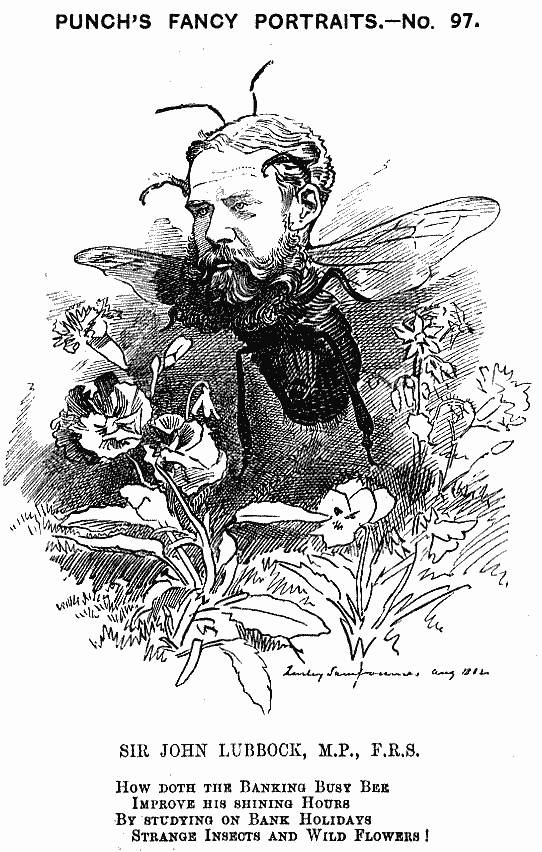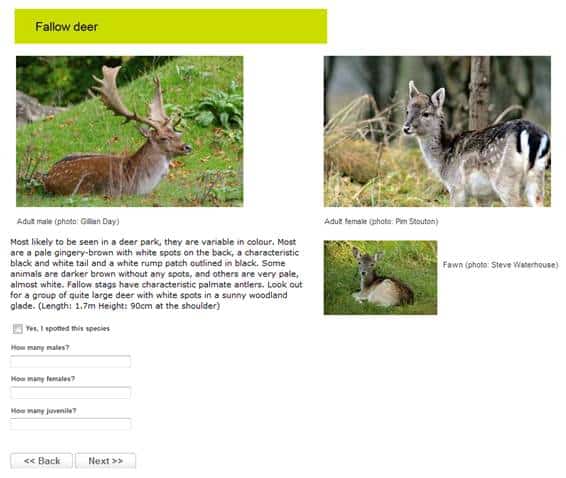Chloë Smith, GiGL Data Officer & Mandy Rudd, GiGL Chief Executive
Citizen science is not new. The Guide to Citizen Science (2012), a joint publication between the Biological Records Centre (part of the Centre for Ecology and Hydrology) and the Natural History Museum, highlights a long tradition of people contributing their free time and expertise to the discovery and understanding of British wildlife.

How doth the Banking Busy Bee …
This history is reflected in GiGL’s species record holdings. The London Natural History Society is a significant GiGL record contributor and traces its roots back to the 1850s when 35 members regularly met in a Haggerston pub. Some of the oldest GiGL records were collected by John Lubbock, a friend of Darwin and a naturalist in his time off from his work in banking. In 1882, he was teased in Punch for this pastime: “How doth the Banking Busy Bee, Improve his shining Hours? By studying on Bank Holidays, Strange insects and Wild Flowers!”
Nowadays, there are more ways than ever for people to take part in science and biological recording in their free time, not just on bank holidays and in the pub. For GiGL partners, running public questionnaires and distributing recording forms has become an increasingly popular way to harness public enthusiasm. Thousands of records in the GiGL database have been generated in this way.
Our early public surveys used paper forms, circulated at events and to people’s homes. Now, there is a new wave in digital and online resources.
Paper perspective – Mandy Rudd
During the summer of 1997, my first task as the new assistant biological recording officer was to translate addresses from London Wildlife Trust’s stag beetle survey into MapInfo GIS. By hand. Using the London A-Z. In this way, I laboriously created a distribution map of approximately 250 of the survey results – a small proportion of the 10,000 or so stag beetle records GiGL holds today.
Two years later, London Wildlife Trust, with the Biological Recording Project, launched their private garden survey at the Regent’s Park Flower Show. The Trust asked the public to look for eight easy to identify species in their gardens, chosen as indicators of good wildlife-friendly habitats. Nearly 2,000 people filled in survey postcards and posted them back to the Trust. In subsequent years, house sparrow and stag beetle were added to the survey. Participation was still high but not at the same level as the first year in 1999. The records were digitised from the paper forms and are today managed by GiGL on the Trust’s behalf.
Going digital – Chloë Smith

But are online survey forms successful? Yes, in the sense that they have contributed many records to the GiGL database and continue to encourage public interest in biological recording and local wildlife, though interest is hard to measure. However, some web forms have been wildly more popular than others. And, postal forms often generated higher response rates. Perhaps the personal touch of a paper form landing on your door-mat can’t be beaten. But, as Mandy mentions, even response rates for exclusively paper forms varied.
Of the borough web forms, Redbridge’s response was notably high with over 5,000 records generated for the borough in 2009-2010. Tower Hamlets and Hackney have designed some lovely forms with us, but so far response has been lower than in the past. Are east London’s residents less enthusiastic about wildlife? Hopefully not. But certainly, the environment of public engagement appears to have changed.
One theory is that, in our digital and multi-media age, we’re competing with ever-increasing noise and a plethora of demands for public participation from many corners. Consequently, promoting wildlife surveys is even more challenging.
Partners are responsible for promoting their GiGL-hosted surveys, and all use different methods. What can we learn from the most popular?
A well-known name and solid membership base helps to boost participation. The London Wildlife Trust surveys and Cockney Sparrow survey with the RSPB have higher than average response rates. Both organisations have strong profiles and direct links to members. Diversifying methods of engagement can help. Last year’s Staggering Gains Survey was publicised almost entirely via social media (using Twitter, Facebook and Flikr) and received a pleasing 700+ responses. The Guide to Citizen Science provides further guidance on the promotion and publicising of a project.
In this new era of citizen science, perhaps we need to accept that public participation in a single survey may be lower than in the heyday of those early paper forms. But the end results; more records and greater engagement; are just as valuable.
The emphasis must be on quality. Online forms can be tailored for specific audiences and provide additional online content to encourage high quality results, learning and feedback.
Digital forms have many advantages. From a data management point of view, carefully designed web forms speed up data validation and data entry. Answers go straight into a spreadsheet and follow a set format. Web forms can include photographs and links to other websites to aid identification and learning. Web forms can also be developed for smart phones and tablet computers – technology that GiGL will be exploring. The challenge of translating handwriting is also avoided!
The current active surveys hosted by GiGL are continuing the tradition of the public generating valuable species records. We encourage you to participate.
Chloë Smith has been creating beautiful survey forms since starting work as GiGL Data Officer in 2009. The first one she worked on was the re-launch of a form for the Horniman Museum. Chloë regularly submits her own species sightings and particularly likes spotting sparrow colonies that she sees on her way to work. She reports these through the Tower Hamlets online form (one of her own), and has also, more recently, reported her first sighting of parakeets in her home neighbourhood through the LISI online form.
During the press launch of the national stag beetle survey in 1998, Mandy Rudd was interviewed live on London Today by Mary Nightingale who asked about the survey and why London is a stag beetle hotspot. Mandy’s highlight of the day wasn’t shakily holding a plastic stag beetle for the duration of the interview, but sharing the green room with one of the song-writers behind the 1971 song ‘Sepheryn’. The song was the inspiration for Madonna’s ‘Ray of Light’ single which was number one in the charts at the time.
